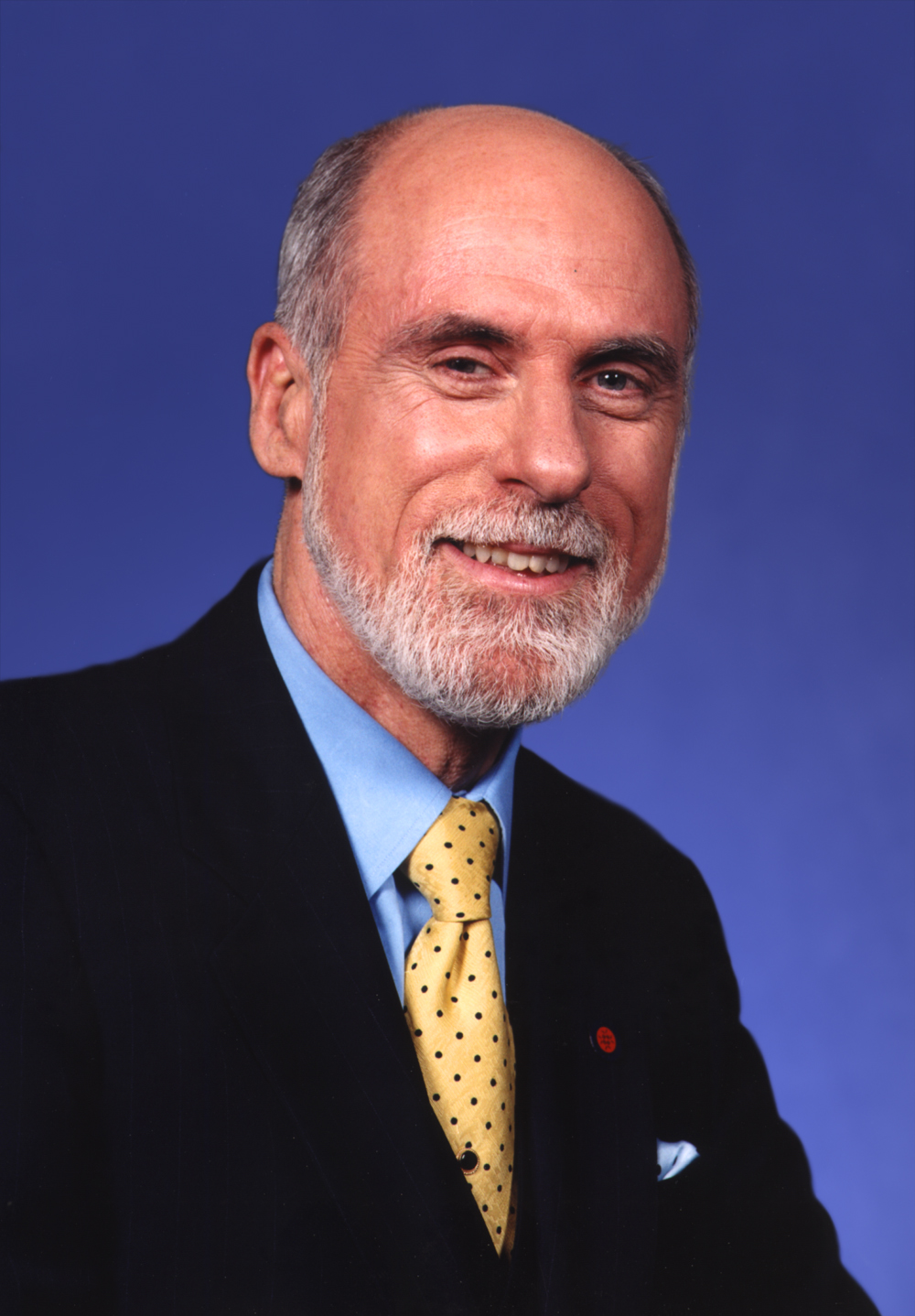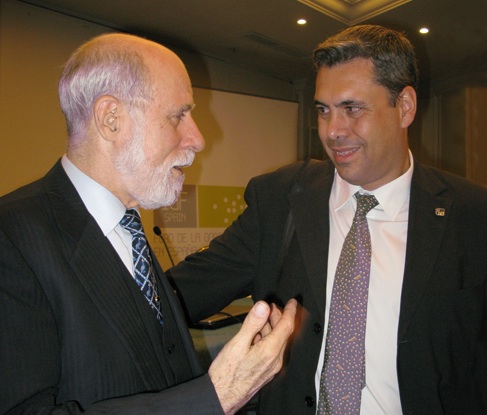 It was a pleasure to be asked to provide a foreword to Enrique Dans’ new book Todo va a Cambiar. He is quite right: everything will change. But, as the French put it: “plus ça change, plus c'est la même chose.” For example, let’s look at cloud computing. In some ways, this is a natural extension of time-sharing, invented in the 1960s. In fact, one hear the term “computing utility” in those days. One envisioned gigantic, mainframe computers in huge buildings, reached via telephone lines from remote terminals. Today, the “terminal” is the browser and the “computing utility” is made up of thousands of processors stacked in racks in huge buildings. And what about interconnecting the clouds? Google has a cloud computing network (connection data centers); Amazon, IBM, Microsoft and others offer various cloud-based services. What happens if we try to interconnect the clouds? Cloud interconnection in 2010 is roughly where network interconnection was in 1973 when Bob Kahn and I began to explore frameworks and architectures for packet network interconnection. Networks existed but did not interconnect and the hosts on one network could not exchange information with hosts on another one. The same may be said for cloud systems today. It is true that browsers can interact with an number of clouds which are, themselves, attached to the Internet but transactions between hosts in specific clouds are not normally supported. Moving data from a cloud into a laptop or desktop and then back into another cloud feels a little like the “sneaker net” notions of the 1970s. There is no doubt in my mind that inter-cloud interactions will be needed and that new protocols, architectures and reference models will need to be developed to produce the desired effect: the ability to move data between clouds and to invoke computations, possibly running concurrently in multiple cloud systems. This has to be a rich area for research and potential new product and service development.
It was a pleasure to be asked to provide a foreword to Enrique Dans’ new book Todo va a Cambiar. He is quite right: everything will change. But, as the French put it: “plus ça change, plus c'est la même chose.” For example, let’s look at cloud computing. In some ways, this is a natural extension of time-sharing, invented in the 1960s. In fact, one hear the term “computing utility” in those days. One envisioned gigantic, mainframe computers in huge buildings, reached via telephone lines from remote terminals. Today, the “terminal” is the browser and the “computing utility” is made up of thousands of processors stacked in racks in huge buildings. And what about interconnecting the clouds? Google has a cloud computing network (connection data centers); Amazon, IBM, Microsoft and others offer various cloud-based services. What happens if we try to interconnect the clouds? Cloud interconnection in 2010 is roughly where network interconnection was in 1973 when Bob Kahn and I began to explore frameworks and architectures for packet network interconnection. Networks existed but did not interconnect and the hosts on one network could not exchange information with hosts on another one. The same may be said for cloud systems today. It is true that browsers can interact with an number of clouds which are, themselves, attached to the Internet but transactions between hosts in specific clouds are not normally supported. Moving data from a cloud into a laptop or desktop and then back into another cloud feels a little like the “sneaker net” notions of the 1970s. There is no doubt in my mind that inter-cloud interactions will be needed and that new protocols, architectures and reference models will need to be developed to produce the desired effect: the ability to move data between clouds and to invoke computations, possibly running concurrently in multiple cloud systems. This has to be a rich area for research and potential new product and service development.
The same ideas will keep recurring, in new guises, as the Internet and its components continue to evolve. New to the data networking environment are mobiles and nothing could be more indicative of the pace of change than this domain of rapid evolution. Enrique Dans’ subtitle: “adapt or disappear” surely applies here. The rate at which new functionality is emerging on mobiles is dramatic. One reason for this is that the platforms themselves are becoming more open (cf: Google Android) and application “stores” are allowing users to download new applications without having to buy a new mobile. The result is a phenomenal proliferation of new functionality coming not only from the makers of the phones or the communications services companies but also from users themselves. This phenomenon mirrors the open Internet, which, itself, continues to evolve as a consequence of user application development. The World Wide Web is largely responsible for providing an environment that is conducive to user contribution of content and functionality. The amazing growth of Google’s YouTube service illustrates this point well.
In addition to these examples, it is becoming apparent that we are evolving an online society. About 25% of the world’s population is on the Internet and perhaps an additional 5% are gaining access to the Internet exclusively by way of mobiles. The most highly penetrated countries appear to have on the order of 75-80% of the population online. In highly penetrated countries, the use of Internet technology for distribution of all forms of information and to support collaborative activity is increasing. Every information medium of the past is being re-created and re-invented in the Internet. Print formats, radio, television, telephony and computer interactions are all melting together in the cauldron of the Internet.
There are many consequences of this convergence. The economics of the Internet underscore the dramatic difference in cost between digital storage and distribution and paper, film, or DVD storage and distribution. The businesses built around physical media may need serious changes to their business models to adapt to the new economics. Online advertising is clearly changing the face of the advertising-based business models of newspapers, magazines, radio and television. Targeted advertising is far more precise, potentially, in the online world than its offline counterpart. New businesses will arise and older ones will adapt or, as Enrique says, disappear.
An example of unexpected businesses shows up in eBay where auctions can be held online that would be impossible in the real world. Individuals may be able to monetize the items in their attics or basements or garages that a typical American “garage sale” could never support. Thin markets are aggregated by network interconnection and that is a new force in the business of auction, barter and exchange. Another example is showing up in multiplayer, online gaming. Some enterprising souls make a living creating virtual attire and cosmetic “surgery” for online avatars. Others make a living by playing the game to improve the performance of characters that are then sold to players too lazy or short of time to invest in character development themselves.
It has often been observed, at least in the high tech world, that the jobs of today many not even have existed 5 years ago. This pace of change and evolution in job mix will continue to surprise us and challenge our readiness for new work. This observation underscores the importance of continuing education and training over a lifetime. Once again, the Internet may contain the seeds of the solution to this challenge by facilitating online, continuing education on a global scale.
Finally, it is clear that the Internet, that has spawned a remarkable social revolution in personal networking, is also going to be home to an Internet of Things – billions of devices connected to each other by means of the net. Sensor networks will be a part of that environment as will the Smart Grid system. The demand for connectivity will spawn increased interest in wireless access to the Internet and increased demand for absolute capacity. The sheer number of instruments online will force the adoption of the new IPv6 packet formats that accommodate 340 trillion trillion trillion unique addresses.
 That the Internet will continue to evolve is a given. To what destination it will evolve is the open question. There are no guaranteed predictions. We are just going to have to live through it to find out where we will all end up!
That the Internet will continue to evolve is a given. To what destination it will evolve is the open question. There are no guaranteed predictions. We are just going to have to live through it to find out where we will all end up!
Vint Cerf
Woodhurst, enero de 2010











